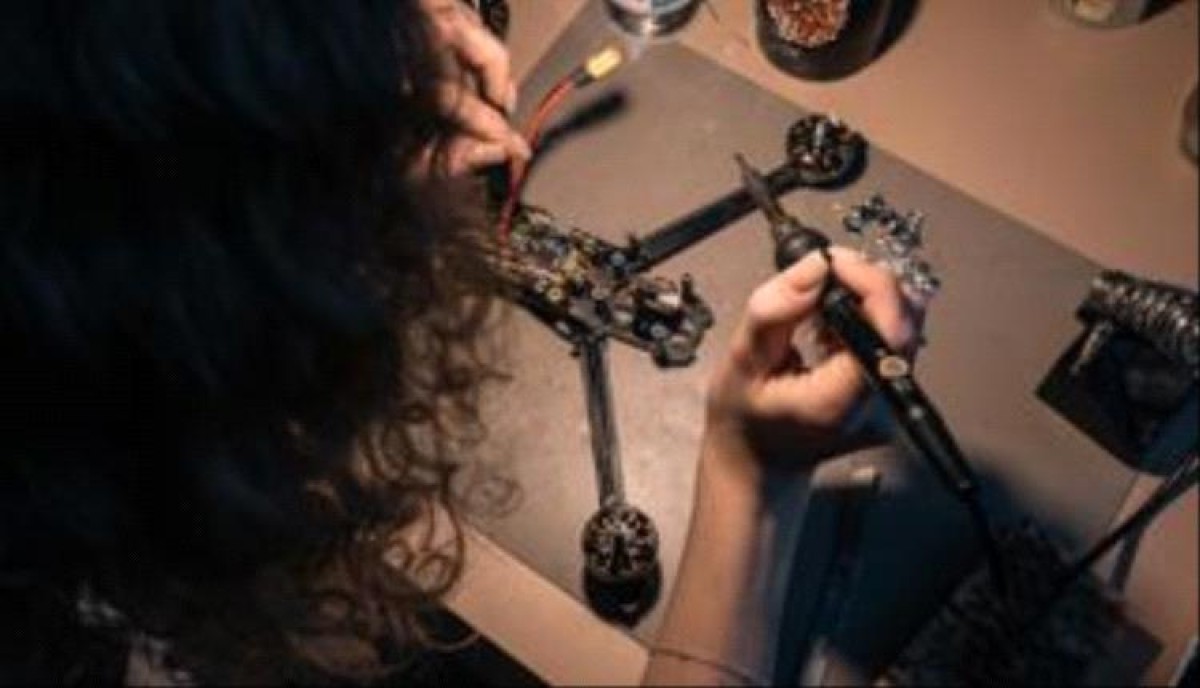Manufacturing drones at home...a Ukrainian solution to confront the ammunition shortage


On the same table that she used to collect flower bouquets, Magdalena now creates parades in her home in the Ukrainian capital, Kiev.
Magdalena (27 years old) is a Ukrainian citizen who was transformed by the war from selling flowers to manufacturing weapons at home, like a large number of Ukrainians who fear Russia’s advance, according to what the American newspaper “The Washington Post” reported.
The newspaper said that since last year, Magdalena has built 150 drones known as (FPVs) and has repaired hundreds of them, including Russian drones collected by Ukrainian forces after they crashed on the front lines.
She added that she had collected more than $200,000 to buy parts for the marches from China, most of which she collected through online donations, and that she and her husband, an information technology specialist, also spent some of their own money.
FPVs are civilian drones redesigned by Ukrainian soldiers to carry explosives and have been widely deployed on the battlefield and are small enough to maneuver in trenches and surprise enemy forces.
In recent months, these marches have become more important as Ukraine runs out of artillery shells and other munitions as it waits for support from allies in the West, including the United States.
The drone operators launch them and direct them at Russian targets using protective glasses and remote controls, which leads to the death or injury of pedestrians and the destruction of equipment, which prompted Moscow to produce this type of drone in large quantities after noticing its effectiveness.
Although Ukraine produces FPV drones in factories with a pledge to produce one million aircraft this year, many of the drones sent to the Ukrainian forces are manufactured by ordinary people who do not deal with any explosives, as they are not glued until after the drones are delivered. To the front.
One of the advantages of this process is that it is decentralized, and thus private homes are less vulnerable to Russian missile attacks than a huge military factory.
Instead of complex assembly lines, volunteers are turning their homes into makeshift workshops for marchers like Magdalena, who calls her office the “drone room.”
For her part, Anna, (33 years old), a product marketer on a mobile application, is working to test marches within a popular group called “Social Drone,” which is one of the local initiatives to teach hundreds of volunteers how to make marches.
The group shares lists of components to be purchased online and written instructions on how to put them together. It also posted a detailed video on YouTube explaining the process, which has been viewed more than 400,000 times since last November.
Once they are made, volunteers send the marches to the group that tests them before shipping them to the front either to a soldier or a specific unit chosen by the volunteers including their friends or family, or they can allow the group to choose a brigade in need.
According to the “Social Drone” website, one drone worth approximately 250 euros can perform the mission of one Javelin missile shell worth 70,000 euros.